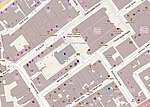London Transport Museum

The London Transport Museum (often abbreviated as the LTM) is a transport museum based in Covent Garden, London. The museum mainly hosts exhibits related to the heritage of London's transport, as well as conserving and explaining the history of it. The majority of the museum's exhibits originated in the collections of London Transport, but, since the creation of Transport for London (TfL) in 2000, the remit of the museum has expanded to cover all aspects of transportation in the city. The museum operates from two sites within London. The main site in Covent Garden uses the name of its parent institution, and is open to the public every day, having reopened in 2007 after a two-year refurbishment. The other site, located in Acton, is known as the London Transport Museum Depot and is principally a storage site of historic artefacts that is open to the public on scheduled visitor days throughout the year. The museum was briefly renamed London's Transport Museum to reflect its coverage of topics beyond London Transport, but it reverted to its previous name in 2007 to coincide with the reopening of the Covent Garden site.
Excerpt from the Wikipedia article London Transport Museum (License: CC BY-SA 3.0, Authors, Images).London Transport Museum
Covent Garden Piazza, London Covent Garden
Geographical coordinates (GPS) Address Website External links Nearby Places Show on map
Geographical coordinates (GPS)
| Latitude | Longitude |
|---|---|
| N 51.511944444444 ° | E -0.12166666666667 ° |
Address
London Transport Museum
Covent Garden Piazza
WC2E 7BB London, Covent Garden
England, United Kingdom
Open on Google Maps








